- Home
- Transportation
- Elon Musk's Hyperloop contest is happening this weekend - here's a look at all the competing pods
Elon Musk's Hyperloop contest is happening this weekend - here's a look at all the competing pods
MIT Hyperloop

University of Wisconsin-Madison: Badgerloop

Team Badgerloop is comprised of undergraduate and engineering students from the University of Wisconsin-Madison, which made the above 15-foot pod. It was one of three teams to secure the Pod Technical Excellence Award at the design phase of the competition.
University of California, Irvine: HyperXite
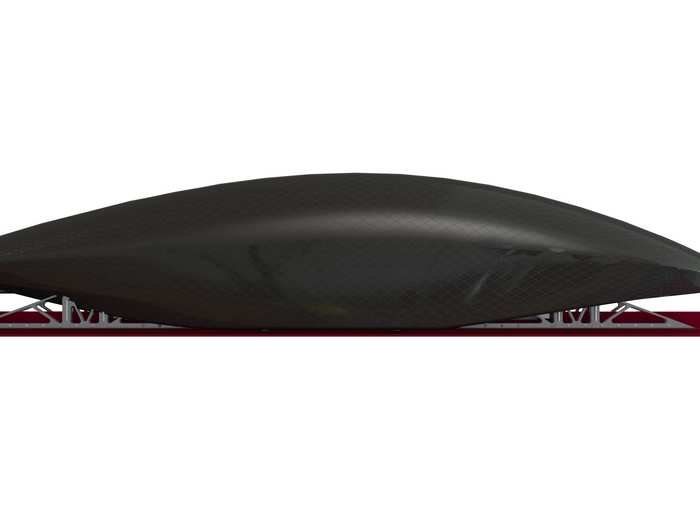
HyperXite is composed of 30 students and took a different approach from other teams by designing a pod that can fit 28 people, which would lower the price of a Hyperloop ticket. It was one of three teams to secure the Pod Technical Excellence Award during the design phase of the Hyperloop competition last January.
Virginia Tech: V-17
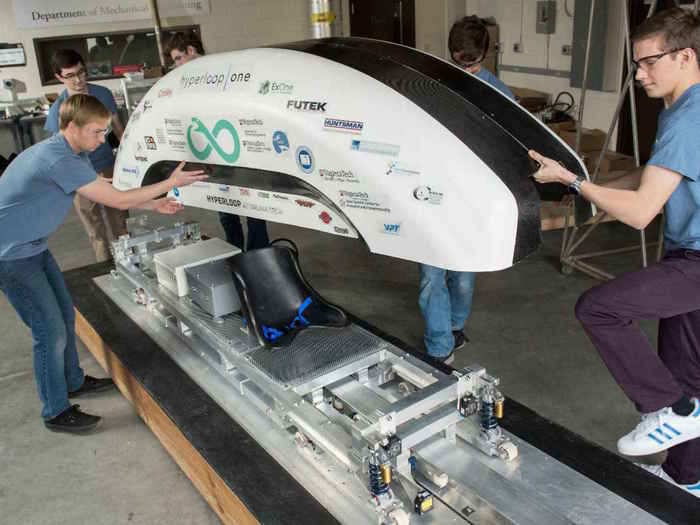
Virginia Tech's Hyperloop team is composed of 29 undergraduate students and was one of three teams to secure the Pod Technical Excellence Award during the competition's design phase.
The team's original pod was named Vhyper and was designed to use cold-gas propulsion to achieve 400 mph. However, Virginia Tech changed strategies and designed a new pod, the V-17, for this weekend's competition. It has a carbon fiber shell to reduce weight by 20% and no longer has a propulsion system.
Delft University of Technology: Delft Hyperloop
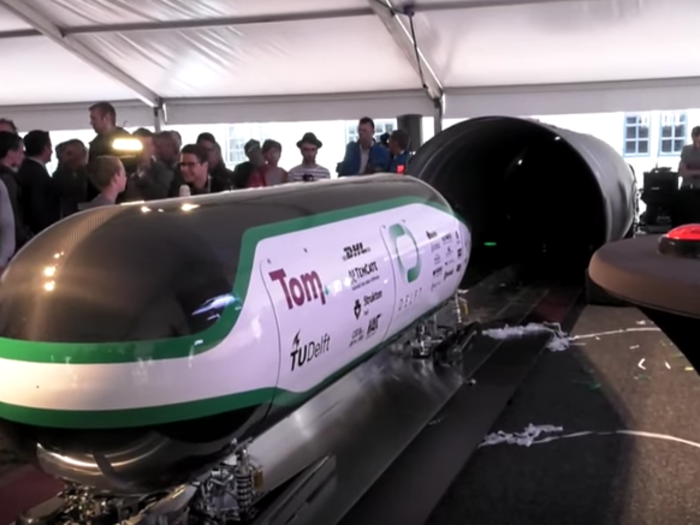
Engineers from around the globe are participating in the SpaceX competition, like Delft Hyperloop, a team hailing from the Netherlands. The team is composed of 30 members from different faculties in the university and claims its pod can reach a speed of 1,200 kilometers-per-hour (roughly 745 mph.)
The pod won the Pod Innovation Award during the design phase of the competition.
University of Washington: UWashington Hyperloop

The team is composed of 40 members, 32 of which are students. It won the Subsystem Safety Technical Excellence Award during the design phase of the competition. The pod is designed to reach 100 mph and levitates using magnets, the Seattle Times reported.
RMit University: Vichyper

The Australian-based university has designed a pod with autonomous control systems to ensure safety. The team won the Braking Subsystem Technical Excellence Award during the design phase of the competition.
Carnegie Mellon Hyperloop
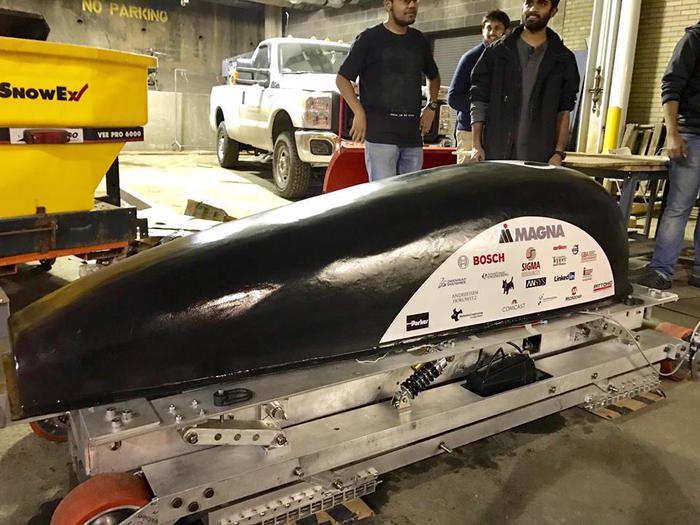
The Carnegie Mellon Hyperloop team is using a carbon fiber shell for its pod to reduce drag and maintain a speed as high as 220 mph. The pod uses electromagnetic induction to float above the track but also comes with a braking system that can bring it to a halt in just 10 seconds from above 200 mph.
University of Florida: Gatorloop
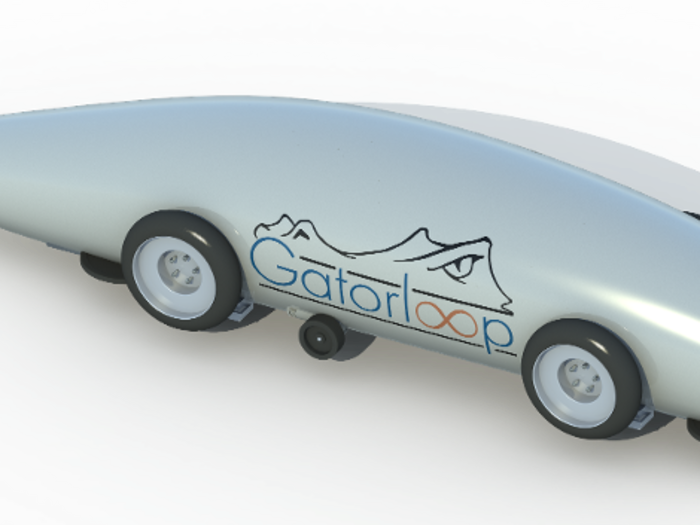
Team Gatorloop is comprised of 15 undergraduate and graduate students. The pod is 15-feet long and can travel up to 250 mph, according to the University of Florida's student newspaper, The Alligator. Unlike other pods in the competition that travel using magnetic levitation, the Gatorloop will run on wheels.
University of Cincinnati: Hyperloop UC
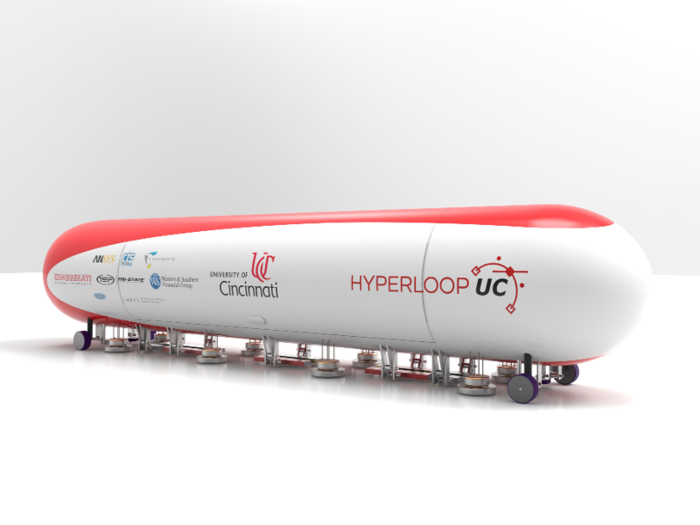
Hyperloop UC used a modular design for its pod so as to separate the passenger area from the engine. That way, there is a crumple zone in the event of a crash.
Keio University: Keio Alpha
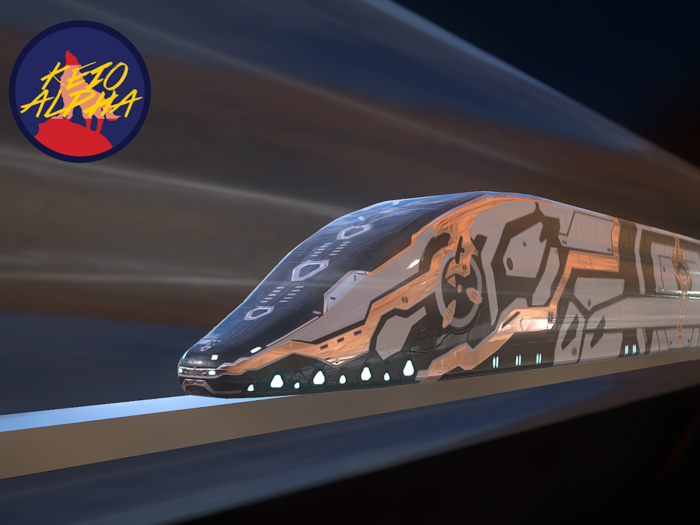
The Keio Alpha team is the only one from Japan competing in this weekend's competition. The team consists of graduate students from Keio University's System Design and Management school.
Lehigh University Hyperloop
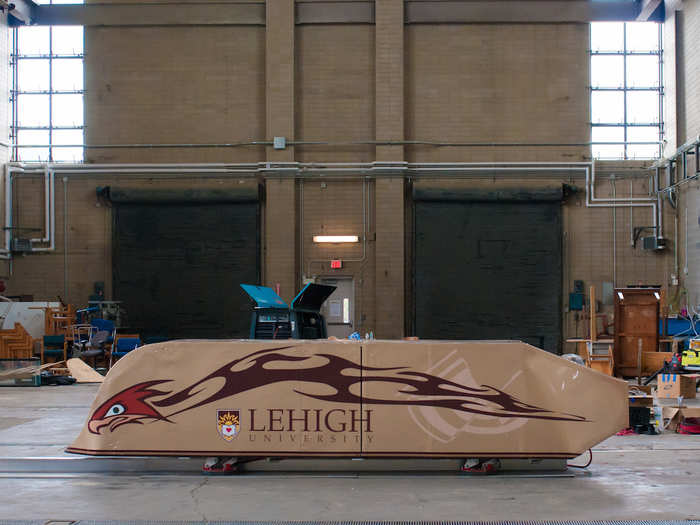
The Lehigh team is massive, totaling 150 students hailing from the University's engineering, arts and sciences, and business schools. The pod uses an active levitation system to float and its main battery pack is composed of 8 Tesla Model S battery packs.
rLoop, the only team not connected to a university.
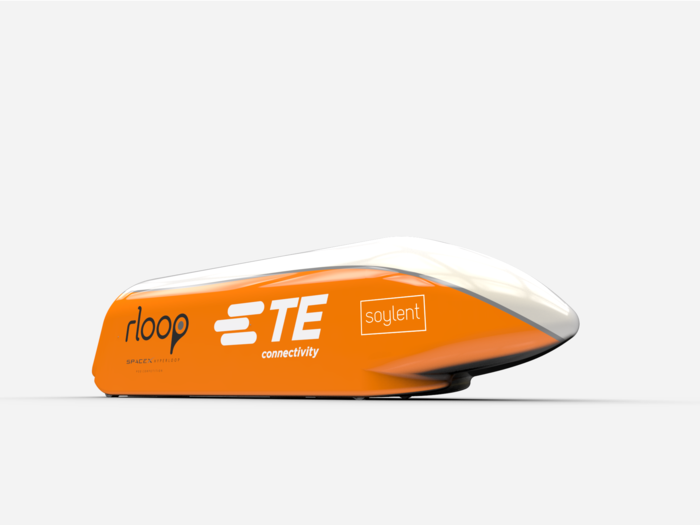
The team actually came together through Reddit and consists of 140 members hailing from different countries. Business Insider's Avery Hartmans previously reported that the team worked virtually and only met in-person upon attending the design phase of the competition last January. The pod, called rPod, uses magnetic levitation to travel.
University of Maryland: UMD Loop
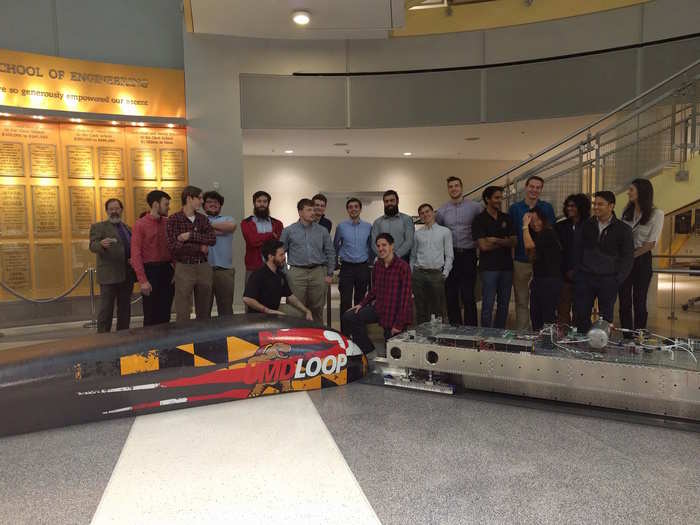
A team consisting of students from the University of Maryland designed a pod, named Prometheus, that uses a multi-link suspension system so its more comfortable for passengers inside.
The University of Maryland was originally collaborating with Rutgers University on the pod under the team name RUMD, but the Rutgers students have since graduated, so it is now entirely comprised of University of Maryland students under the revised name UMD Loop.
St. John's High School: Team HyperLift
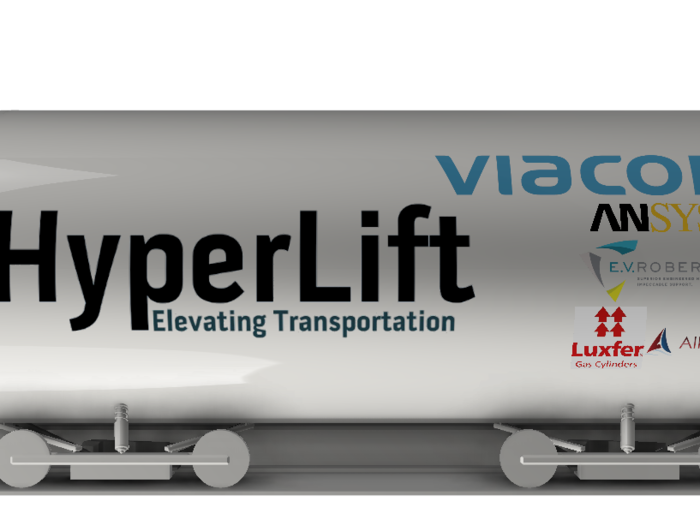
That's right, even high school students are participating in SpaceX's Hyperloop competition. Six students hailing from St. John's in Houston, Texas will show of their HyperLift pod in California this weekend.
University of Wisconsin-Milwaukee: Mercury Three
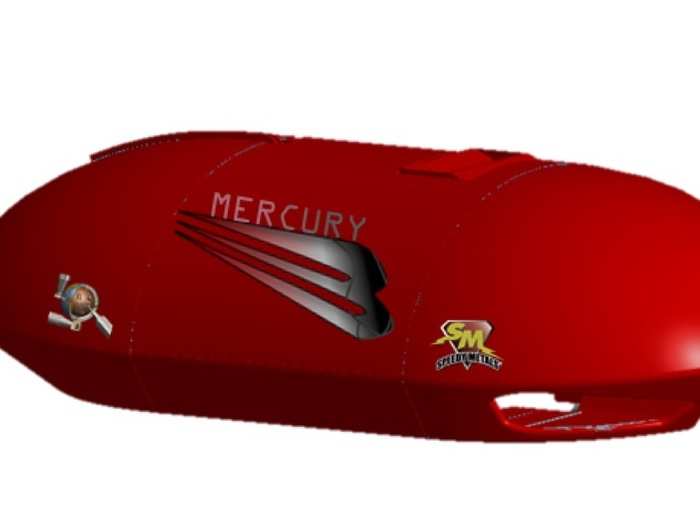
The 13-member team designed and built a pod named after the Roman messenger of the gods that uses magnetic levitation to travel.
Technical University of Munich: WARR Hyperloop
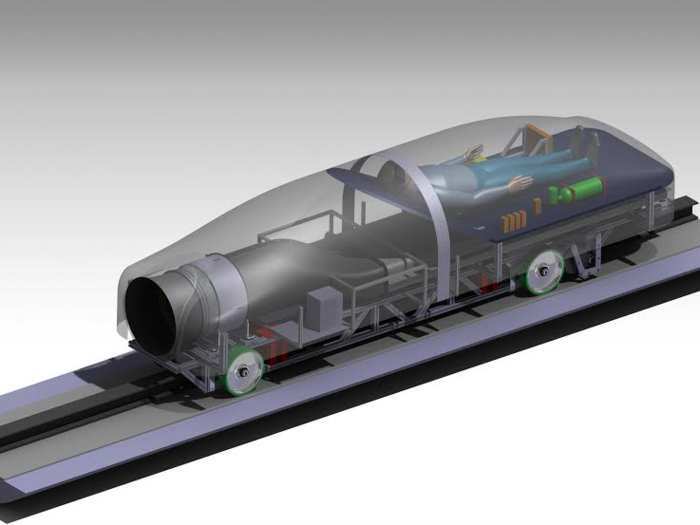
There are 37 students on the team hailing from Munich, Germany, which is one of two European teams participating in this phase of the competition. The pod is capable of achieving a top speed of 350 kilometers-per-hour (roughly 217 mph) and uses electrodynamic suspension to levitate.
University of Waterloo: Waterloop
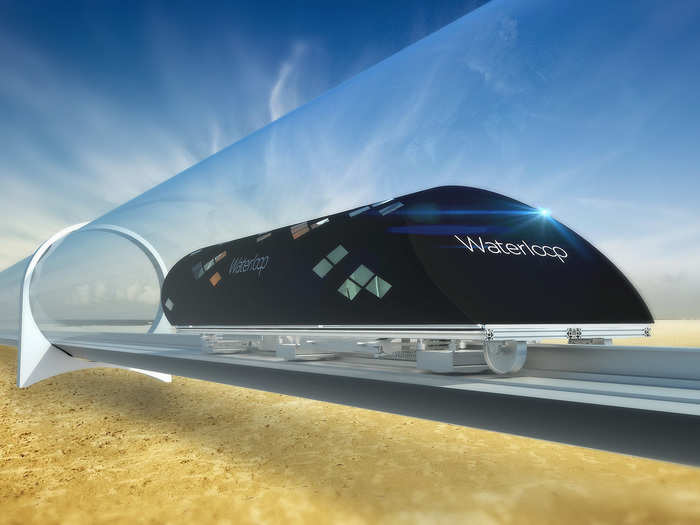
The massive team of 150 students come from a variety of disciplines at the University of Waterloo based in Ontario, Canada. The team's pod, Goose I, is a functional, half-scale prototype that is capable of traveling 550 kilometers-per-hour (roughly 342 mph.)
University of Southern California: Hyperloop at USC
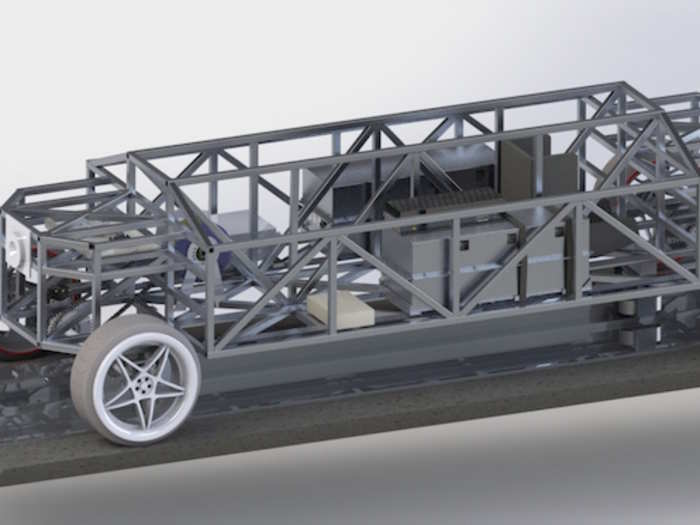
USC's Hyperloop team consists of 20 undergraduate and graduate students. Their pod is capable of accelerating to 320 mph in just 7 seconds, Spencer McDonough, the team's program manager, told Business Insider. The pod uses high-powered propulsion and regenerative braking using a wheeled suspension.
Purdue Hyperloop
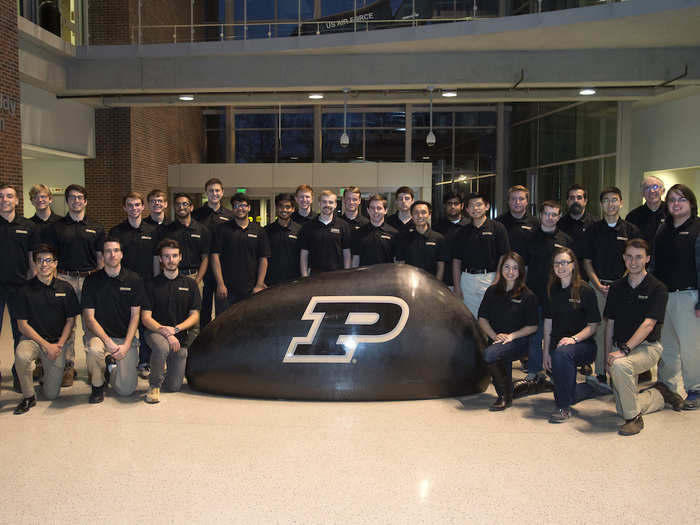
Purdue's Hyperloop team is composed of 30 undergraduate and graduate students. The team's pod is made of a carbon fiber structure and is capable of magnetic levitation.
Louisiana State University: Bayou Bengals
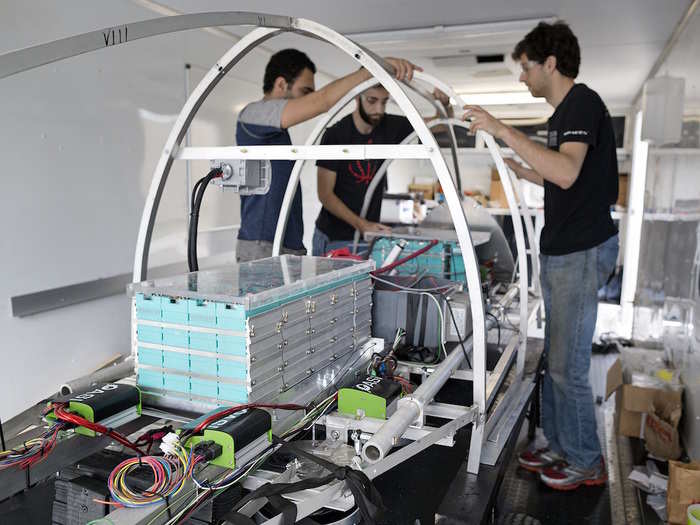
The team is comprised of 20 students who designed a pod that is 12-feet long and is expected to reach a top speed of 150 mph. Unlike most teams, the Bayou Bengals equipped its pod with an on-board propulsion system. The outer shell is made of carbon fiber.
University of California, Berkeley: Bloop

Bloop made a pod with a pressurized cabin so people could really sit inside of it and breathe. The 550-pound pod uses a passive magnetic levitation system to travel.
University of Colorado Denver: Team HyperLynx
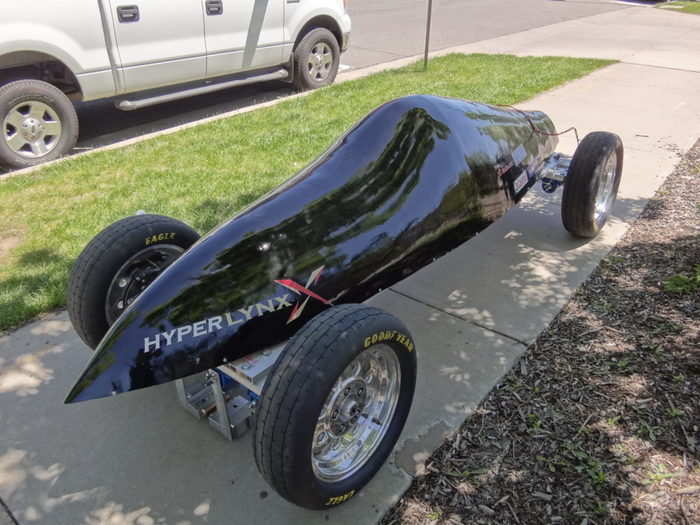
Team HyperLynx originally started as a senior design project for mechanical engineering students, but juniors are now leading the project. The pod uses air bearings as a levitation mechanism while a linear induction motor provides thrust. The team carefully designed the pod to reduce drag.
University of Illinois at Urbana Champaign: Illini Hyperloop
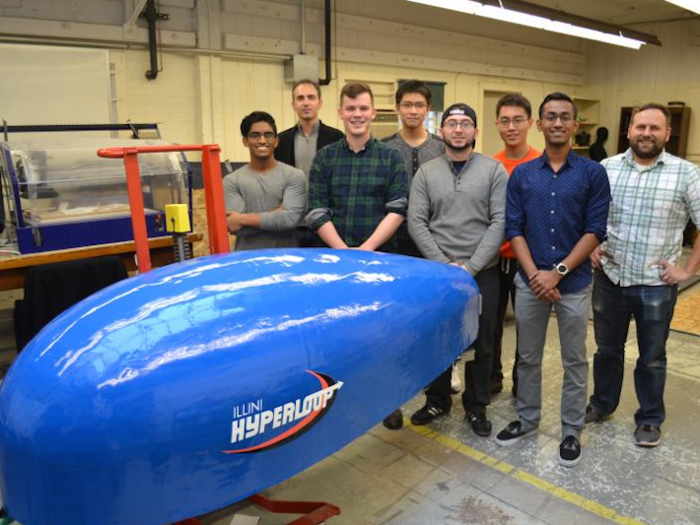
The Illini Hyperloop team is entirely composed of undergraduate students. Its pod is 7-feet long and hovers using a magnetic levitation system, ChicagoInno reported. The team is aiming for the pod to reach 250 mph.
New York University: NYU Hyperloop

The NYU team optimized its pod for freight transportation. It's modular to accommodate different container types and has a wheel supported design.
OpenLoop: Northeastern, Memorial University, Princeton, Cornell, Harvey Mudd College, and the University of Michigan
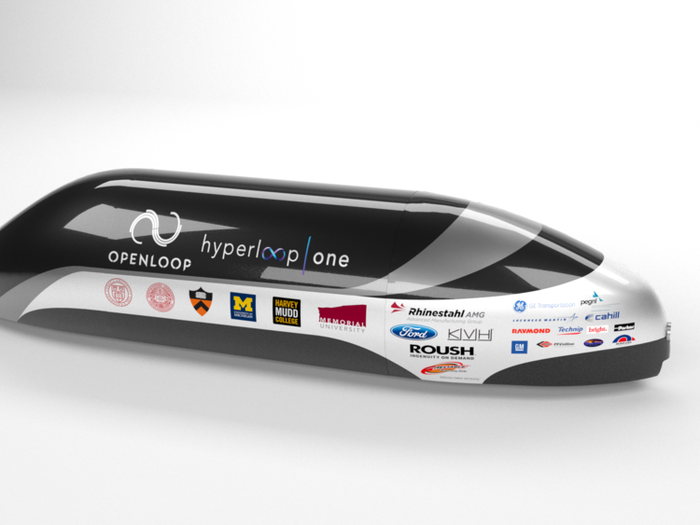
The six-school alliance has designed a pod with a pneumatic based levitation system. The pod is designed to reach 200 mph and has a built-in control system to adjust its flight profile.
Business Insider's Avery Hartmans wrote an earlier version of this post.
Popular Right Now
Popular Keywords
Advertisement